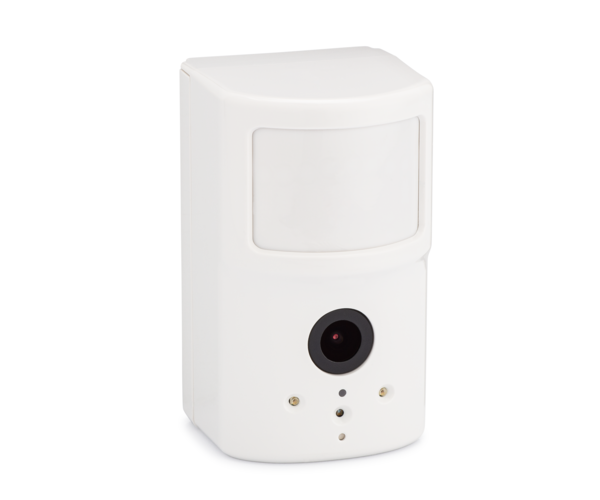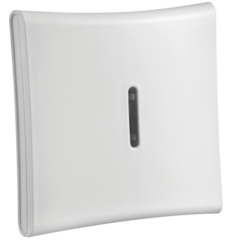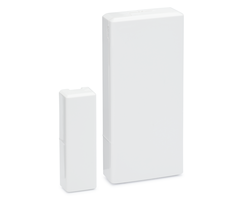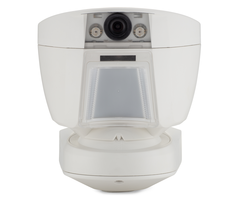If you are looking for an affordable and effective way to monitor your home and see what's going on while you are away, then image sensors might be worth exploring. When used in conjunction with security systems, image sensors offer great function and convenience, all for a low price.

The simplest way to describe an image sensor is as a motion detection sensor combined with a still-picture camera. Unlike security cameras that capture full-motion video footage, most image sensors will only produce non-moving images. These are some of the most interesting and unique devices that you can use with a home alarm system. While image sensors certainly aren't for everyone, many end-users take full advantage of these peripherals and what they have to offer. Overall, image sensors can go a long way towards rounding out your security system and helping you get the most out of it.
Perhaps the best way to use image sensors is as alarm verification devices. If you live in a jurisdiction where verified response is required, then using image sensors is often the only option you can use to verify an intrusion, short of upgrading to full video monitoring service. Depending on the image sensor and system you are using, you may be able to achieve a setup where captured image sensor pictures are sent to the central station for immediate review. A trained operator can review the images and use them as sufficient proof of a crime in progress and use that as grounds for requesting emergency dispatch. You should check your local alarm codes and ask your monitoring company if verified response is enforced in your area. .Alarm Grid monitored customers can email us at support@alarmgrid,com. We respond to emails during our regular business hours of 9 am to 8 pm ET M-F.
You might be wondering why image sensors aren't more popular than they already are. While image sensors sound excellent in theory, and they often meet those high expectations in practice as well, they are somewhat quirky devices that can present a unique set of challenges. That's also not to mention that some image sensors have notable limitations and restrictions in how they can be used. This shouldn't scare you away from using them, but you should understand that you may have to overcome some obstacles to achieve the setup you want. And also understand that some systems cannot support image sensors in any fashion.
One thing to consider with image sensors is that they are always two-way communication devices. You might call them bi-directional sensors. With image sensors, it's not as simple as the sensor sending a signal to the alarm panel. The panel also needs to send signals to the image sensor. For example, if an alarm is triggered on the system, then the system needs to be able to tell the image sensor that an alarm has occurred, and the image sensor needs to capture a photo of the scene. Then the image sensor needs to turn around and send the image to the panel so that it can ultimately be distributed to an interactive security notification platform, and potentially the central station, and the end-user. The bi-directional communication is also what makes it possible for an end-user to request image sensor photos in real-time, when supported. Because of this, many alarm panels cannot support image sensors unless a specific image sensor transceiver module is added to facilitate two-way communication. And for some panels, image sensor support isn't even possible, as no compatible image sensors and/or image sensor transceivers exist for the panel.
Now that we have talked about image sensors in general, let's start exploring some of the specific models. To make this a bit more simple, we will try and focus on different options available on a panel-by-panel basis. Just like with regular sensors, image sensor support depends on which panel is being used. We will start by addressing the fact that most of the Honeywell Alarm Panels don't support image sensors, though there is an exception. The Honeywell Lyric, the Honeywell LYNX Panels, and the Honeywell VISTA Panels all lack image sensor support.
Interestingly though, the Honeywell Home and Resideo ProSeries Panels - PROA7PLUS, PROA7PLUSC, PROA7, and PROA7C - all have a fairly unique image sensor option in the Honeywell Home PROINDMV. This is the only image sensor presented in this blog that can be set to capture full-motion video (10 fps) or still motion images (320x240). Captured video and images can be viewed at the panel under Panel Camera History, with the ten (10) newest captures being available for viewing. Captured footage is also sent to Total Connect 2.0 for remote viewing. At the time of this writing, the PROINDMV is the only image sensor available for use with TC2. This also makes it the only image sensor we offer that can be used with an IP-only monitoring plan. We're sure that Resideo is also working on a way to make captured video and photos visible to central station operators, but we haven't heard of such a feature being set up just yet. There is also a downside to the PROINDMV in that you cannot use it to request video and/or images. In other words, no peek-in function is available for the PROINDMV, at least not at this time.
Moving onto the Alarm.com Security Systems, pretty much all of the most popular systems have some image sensor option available. It seems that Alarm.com has really embraced this technology and made it possible for almost all users to start using image sensors. We will start with the PowerG Image Sensors, which are some of the most popular image sensors we offer. As PowerG already operates using two-way communication, PowerG Image Sensors do not require any special modules or add-ons for support. You just need a system that supports regular PowerG Sensors, such as a Qolsys IQ Panel 2 Plus or a DSC PowerSeries NEO with an added PowerG Transceiver. And even better if you have an IQ2+ you will be able to view captured images from the alarm panel, in addition to viewing them from Alarm.com. One limitation however is that these image sensors will only capture images when they specifically trigger alarms on the system. Alarms caused by other zones will not result in the PowerG Image Sensors producing photos. There are currently two (2) PowerG Image Sensors, those being the DSC PG9934P Indoor Image Sensor and the DSC PG9944 Outdoor Image Sensor.
All of the other image sensors used with Alarm.com Systems require some type of hardware add-on for the panel. Sticking with Qolsys, adding the Qolsys IQ Card-IS to the original IQ Panel 2 will make it possible to enroll the Qolsys QZ81030-840 Image Sensor with the system. Technically, you can also add the IQ Card-IS to a newer Qolsys IQ Panel 2 Plus, but doing so will require it to "steal" the internal antenna used by the PowerG Daughtercard. This will result in the system having virtually zero useful wireless range with Power Sensors. As a result, anyone with an IQ Panel 2 Plus is strongly discouraged from going the route of the IQ Card-IS and QZ81030-840 combo, and just get PowerG Image Sensors instead. But if you do have an original IQ2, then using a QZ81030-840 with an IQ Card-IS is a great option.
The 2GIG Alarm Panels also support image sensors, but only if an image sensor module add-on has been added to the system. Starting with the 2GIG GC2 and its successor, the 2GIG GC2e, both systems can support the 2GIG IMAGE1 Image Sensor after a 2GIG XCVR2-345 Image Sensor Module has been added and installed. Unfortunately, for 2GIG GC2e users, adding the 2GIG XCVR2-345 will take away the system's ability to support 2GIG eSeries Encrypted Sensors. We have heard rumors in the past that a 2GIG XCVR2e-345 Image Sensor Transceiver Module would be specifically manufactured for the 2GIG GC2e so that the system could support both image sensors and encrypted sensors simultaneously, but it's looking increasingly likely as of late that such a release may never see the light of day. Even then, the 2GIG IMAGE1 is an older device, and it isn't known for producing the most detailed images. Still, for alarm verification purposes, it usually gets the job done. Both the IMAGE1 and the XCVR2-345 are still available on our website.
Moving onto the 2GIG GC3 and 2GIG GC3e, both of these systems support the 2GIG XCVR3-GC3 Image Sensor Module, to allow 2GIG IMAGE2 and 2GIG IMAGE3 Image Sensors to be paired. Don't let the need for the XCVR3-GC3 scare you away. The module is extremely affordable and very easy to install. It just uses a 4-wire connection with the system board, and it hangs out the back of panel. Unlike the issues experienced with the GC2e, adding the 2GIG XCVR3-GC3 to a GC3e will NOT take away the panel's ability to support 2GIG eSeries Encrypted Sensors. Furthermore, the supported image sensor devices for the XCVR3-GC3 are newer, and they are known for producing clearer images than the earlier IMAGE1. The 2GIG IMAGE2 is still relatively basic with its 320x240 QVGA resolution. But the 2GIG IMAGE3 really shines with its 640x480 VGA resolution, thereby making it one of the best image sensors on the market. These image sensors can be set to automatically produce images during alarm events, and a user can even manually request images using the "peek-in" feature on Alarm.com. All things considered, image sensor support for the GC3 and GC3e is surprisingly robust, and in our opinion, quite underrated. These really are some of the best alarm systems available for image sensor support, and we think more GC3 and GC3e users should take advantage of images sensors and what they can bring to one of these systems.
Unfortunately, we have to end this post with the sad story of image sensor support on the 2GIG Edge. While the 2GIG Edge has made a huge splash in the security industry, representing one of the most exciting panel debuts we have seen of late, image sensor support for the system is basically non-existent. To elaborate, the 2GIG Edge supports the same image sensor module add-on as the GC3 and GC3e, that being the 2GIG XCVR3-GC3, and it remains very easy to install, using the same 4-wire connection as before, and just hanging out the back of the panel. Once added, you can pair the 2GIG IMAGE3 Image Sensor with the Edge, but the 2GIG IMAGE2 is unsupported. We're glad that 2GIG chose the "better" of the two image sensors to work with the Edge, but we're still a bit surprised that the IMAGE2 can't interface with the Edge and the XCVR3-GC3 combo. Fortunately, just like with the 2GIG GC3e, adding the 2GIG XCVR3-GC3 to the Edge will not eliminate the system's ability to support 2GIG eSeries Encrypted Sensors.
However, and this is a big deal, the 2GIG Edge with 2GIG XCVR3-GC3 will only see the 2GIG IMAGE3 as a standard motion detection sensor. In other words, the Edge cannot receive any of the captured images from the IMAGE3. And since the Edge can't get the captured images, it therefore cannot forward them to Alarm.com and/or the central station. This makes the 2GIG IMAGE3 nothing more than a fancy motion sensor for the Edge. It's super unfortunate, and one of the saddest things to learn about the 2GIG Edge. There is a ray of hope though. 2GIG has stated that this behavior between the Edge and IMAGE3 is not intentional, and they are working on a firmware fix to provide true image sensor support for the Edge in the future. No ETA for a fix is currently available, but we are hopeful that the 2GIG Edge will one day be able to carry on 2GIG's legacy of having some of the best image sensor support in the industry. For more information, we have a blog on the limitations of the 2GIG Edge in regards to image sensor support, which you can view here. And you can certainly expect Alarm Grid to provide an update once image sensor support for the 2GIG Edge has been fixed and made to work as intended.
We hope that this post has opened up your mind towards adding image sensors to your security system. They really are some useful and handy devices when set up properly. Users in verified response jurisdictions who aren't quite ready to make the jump to video cameras and the more expensive monitoring plans that come with them can often get started with image sensors at very little cost. And with a bit of testing and configuration, yours can truly be great and help you keep your home safe. If you have any thoughts or questions about image sensors, please leave them in a comment down below. We are eager for some fun and enthusiastic discussion about image sensors and what they can offer for home security. And don't forget to keep checking the Alarm Grid Blog, as we will have some more great topics to cover and discuss in the near future.








 One other benefit of PowerG Sensors that we have never discussed previously is their Adaptive Transmission feature that helps them conserve battery life. This is why you will often see a PowerG Sensor with a very long expected battery life, sometimes more than ten (10) years). Adaptive Transmission involves two-way communication between the PowerG Sensor and the alarm panel. The alarm panel will tell the PowerG Sensor how well its signal is being received. The PowerG Sensor can then adapt its outgoing signal so that it reliably reaches the panel, without expending too much energy. The sensor and the panel regularly exchange this information so that the ideal amount of energy is always used in signal transmissions. This saves battery life in the long run.
One other benefit of PowerG Sensors that we have never discussed previously is their Adaptive Transmission feature that helps them conserve battery life. This is why you will often see a PowerG Sensor with a very long expected battery life, sometimes more than ten (10) years). Adaptive Transmission involves two-way communication between the PowerG Sensor and the alarm panel. The alarm panel will tell the PowerG Sensor how well its signal is being received. The PowerG Sensor can then adapt its outgoing signal so that it reliably reaches the panel, without expending too much energy. The sensor and the panel regularly exchange this information so that the ideal amount of energy is always used in signal transmissions. This saves battery life in the long run.







